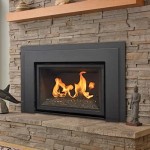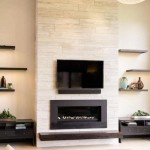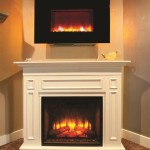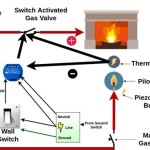Fire Logs for Gas Fireplaces: Aesthetics and Functionality
Gas fireplaces offer a convenient and often cleaner alternative to traditional wood-burning fireplaces. They provide instant warmth and ambiance with the flick of a switch. However, the aesthetic appeal of a gas fireplace often relies heavily on the artificial logs used to simulate a real wood fire. These fire logs for gas fireplaces are designed to withstand high temperatures and enhance the visual experience of the flames.
Choosing the right fire logs for a gas fireplace involves considering several factors, including the type of gas used (natural gas or propane), the size of the fireplace, the material of the logs, and the desired aesthetic. A poorly chosen set of logs can not only look unnatural but also affect the efficiency and safety of the fireplace.
The primary function of fire logs in a gas fireplace is to disperse the flames in a visually pleasing manner. They also help to radiate heat more effectively into the room. A well-designed log set will create a realistic flame pattern that mimics the look of a burning wood fire, contributing significantly to the ambiance of the space.
Understanding the different types of fire logs, their materials, and installation requirements is essential for ensuring a safe and enjoyable experience with a gas fireplace. Proper installation and maintenance are equally crucial for maximizing the lifespan of the logs and maintaining the fireplace's efficiency.
Types of Fire Logs for Gas Fireplaces
Fire logs for gas fireplaces are available in a variety of materials, each offering different characteristics in terms of appearance, durability, and heat retention. The most common types include ceramic fiber logs, refractory cement logs, and vermiculite logs.
Ceramic Fiber Logs: These logs are made from a lightweight, porous material that is excellent at dispersing flames. They tend to be very realistic in appearance, often featuring intricate details that mimic the bark and texture of real wood. Ceramic fiber logs heat up quickly and cool down just as fast, making them efficient in terms of heat output control. However, they are also more fragile than other types of logs and can be prone to damage if handled roughly. Over time, they may also show signs of wear and tear from the constant exposure to high temperatures.
Refractory Cement Logs: These logs are made from a heavier, more durable material that offers excellent heat retention. They radiate heat for a longer period, even after the gas is turned off. Refractory cement logs are generally more expensive than ceramic fiber logs, but they are also more resistant to damage and have a longer lifespan. While they may not have the same level of intricate detail as ceramic fiber logs, they still provide a realistic and attractive appearance. The weight of these logs also helps to stabilize the flame pattern and prevent unwanted movement.
Vermiculite Logs: Vermiculite is a naturally occurring mineral that is expanded and treated to create lightweight and heat-resistant logs. Vermiculite logs are often used as a base material for other types of logs or as a filler to create a more realistic fire bed. They are less expensive than ceramic fiber or refractory cement logs, but they do not offer the same level of detail or durability. Vermiculite logs are often combined with other materials to enhance their appearance and heat retention properties.
The choice of log type will depend on individual preferences, budget considerations, and the specific requirements of the gas fireplace. Each type offers a unique combination of aesthetics, durability, and heat performance.
Safety Considerations for Fire Log Installation
Installing fire logs in a gas fireplace is a relatively straightforward process, but it is crucial to follow the manufacturer's instructions carefully to ensure safety and proper operation. Incorrect installation can lead to inefficient heating, carbon monoxide leaks, and potential fire hazards.
Gas Type Compatibility: One of the most important considerations is ensuring that the logs are compatible with the type of gas used in the fireplace. Natural gas and propane fireplaces require different types of logs due to the different burning characteristics of each fuel. Using the wrong type of logs can result in incomplete combustion, leading to the production of carbon monoxide. The manufacturer's specifications will clearly indicate whether the logs are designed for natural gas or propane use.
Log Placement: The placement of the logs is also critical. The logs should be arranged in a way that allows the flames to flow freely and prevents them from being obstructed. Improper placement can cause the flames to impinge on the fireplace walls or glass, leading to overheating and potential damage. The logs should also be positioned to avoid blocking the burner ports, which can disrupt the gas flow and create a safety hazard. Most log sets come with a diagram illustrating the correct placement of each log.
Ventilation: Proper ventilation is essential for the safe operation of a gas fireplace. The fireplace should be properly vented to allow for the exhaust of combustion gases. Obstructing the ventilation system can lead to a buildup of carbon monoxide, which is a colorless and odorless gas that can be fatal. Regularly inspect the ventilation system to ensure that it is free of obstructions, such as debris or bird nests. A carbon monoxide detector should be installed in the vicinity of the fireplace to provide an early warning of any leaks.
Professional Installation: If unsure about any aspect of the installation process, it is always best to consult with a qualified gas fireplace technician. A professional can ensure that the logs are installed correctly and that the fireplace is operating safely and efficiently. Regular maintenance and inspection by a qualified technician are also recommended to prevent potential problems and ensure the long-term performance of the fireplace.
By adhering to these safety guidelines, users can enjoy the warmth and ambiance of a gas fireplace without compromising their safety or the safety of their homes.
Maintaining and Replacing Fire Logs
Like any other component of a gas fireplace, fire logs require regular maintenance and eventual replacement. Over time, exposure to high temperatures and combustion byproducts can cause the logs to deteriorate, affecting their appearance and performance. Proper maintenance can extend the lifespan of the logs and ensure that the fireplace operates safely and efficiently.
Cleaning: Regular cleaning is essential for maintaining the appearance and performance of fire logs. Dust and soot can accumulate on the logs over time, dulling their appearance and potentially affecting the flame pattern. The logs should be cleaned periodically using a soft brush or vacuum cleaner attachment. Avoid using harsh chemicals or abrasive cleaners, as these can damage the logs. If the logs are heavily soiled, a mild detergent solution can be used, but it is important to rinse them thoroughly and allow them to dry completely before reinstalling them in the fireplace.
Inspection: Regularly inspect the logs for signs of damage, such as cracks, chips, or crumbling. Damaged logs can affect the flame pattern and may also pose a safety hazard. If any significant damage is found, the logs should be replaced as soon as possible. Also, check the burner assembly for any signs of corrosion or damage, as this can also affect the performance of the fireplace. The pilot light should be inspected regularly to ensure that it is burning cleanly and steadily. A flickering or erratic pilot light may indicate a problem with the gas supply or burner assembly.
Replacement: The lifespan of fire logs varies depending on the material and usage frequency. Ceramic fiber logs typically last for several years, while refractory cement logs can last much longer. However, even the most durable logs will eventually need to be replaced. When replacing the logs, it is important to choose a replacement set that is compatible with the fireplace and the type of gas used. Follow the manufacturer's instructions carefully when installing the new logs, and ensure that they are positioned correctly to allow for proper flame flow and ventilation.
Professional Service: Consider having the gas fireplace serviced annually by a qualified technician. A professional can inspect the entire system, including the gas lines, burner assembly, and ventilation system, to ensure that it is operating safely and efficiently. They can also clean the burner and replace any worn or damaged parts. Regular servicing can help to prevent potential problems and extend the lifespan of the fireplace.
By following these maintenance and replacement guidelines, users can ensure that their gas fireplace continues to provide warmth and ambiance for years to come.
Ultimately, selecting, installing, and maintaining fire logs for a gas fireplace involves a careful consideration of aesthetics, safety, and functionality. By understanding the different types of logs available, adhering to safety guidelines, and performing regular maintenance, users can enjoy the benefits of a gas fireplace while creating a realistic and inviting ambiance in their homes. The initial investment in a quality log set, coupled with proper care, will contribute to a safe and enjoyable experience for years to come.

The Best Gas Log Sets For 2024 Fireplaces Direct Learning Center

Vented Gas Logs Heater Or Decorative Bart Fireside

Napoleon Gl18e Vented Gas Log Set 18 Inch

Majestic Vdy Duzy Series Vented Gas Log Set

American Gas Log Dundee Oak 30 In Vented Natural Fireplace Set With Complete Kit Manual Match Lit Do30hdmtch The Home Depot

Gas Fireplace Log Bundle Woodstack 18 Harvest Exclusive Masters Services Chimney Sweep And Masonry

How To Choose Your Gas Fireplace Logs

Gas Logs What You Need To Know Before More

Vented Gas Logs Natural And Propane

Beautiful Gas Burning Fireplace Log Installations Buffalo Rochester Ny








